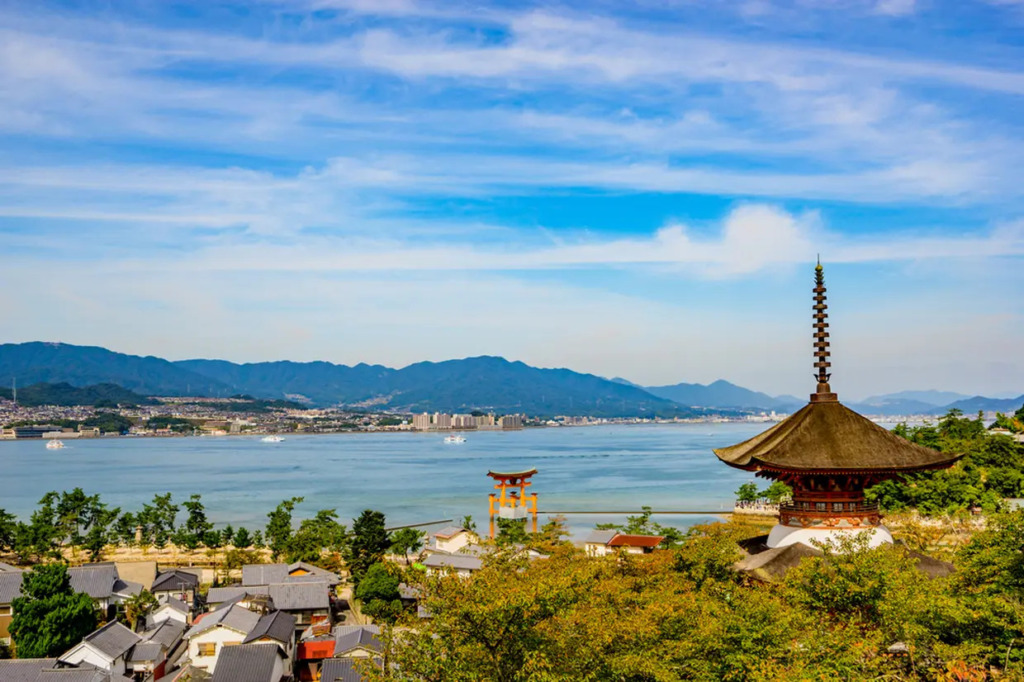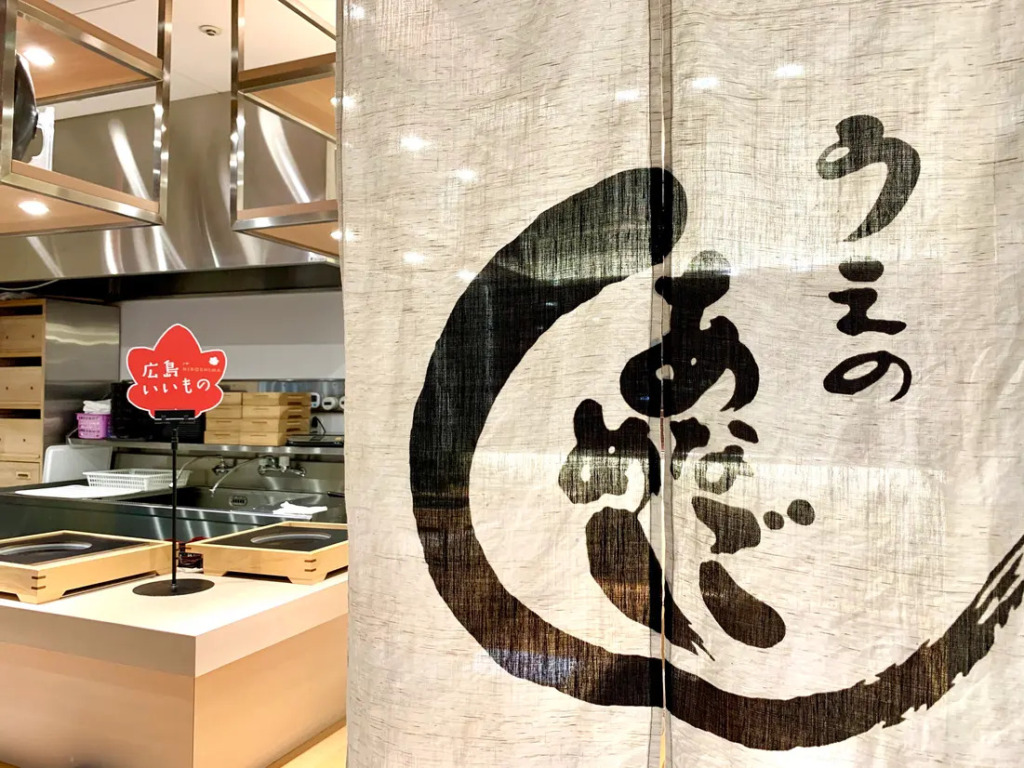Anago (conger eel) -meshi (rice), a specialty of Miyajima, Hiroshima Prefecture, is a local dish also known as a taste of home cooked food in Hiroshima, and has been attracting attention not only from Hiroshima residents but also from tourists from outside the prefecture since it became popular as a Ekiben, a train station bento lunch box, in 1901. Anago-meshi is available not only in the Miyajima area but also in Hiroshima City, so be sure to try it during your trip to Hiroshima. In this issue, we will introduce the characteristics of anagome-meshi, what it is like to actually eat it at a popular restaurant, and our recommendations for places to eat anagome-meshi in Hiroshima!
Click here to learn more about Hiroshima
What is Anago-meshi?
Anago-meshi is a local dish of Hiroshima Prefecture, originating on Miyajima Island, a famous tourist destination. Anago-meshi is a dish in which soup stock is made from conger eel heads, bones, kelp, and other ingredients, rice is cooked in the soup stock mixed with soy sauce, and finally the cooked rice is topped with broiled conger eel. It is a popular home-style dish in Hiroshima, especially on Miyajima Island, as it does not require any unusual seasonings or special cooking methods, and is relatively easy for anyone to prepare.

History
Along with conger eels, Miyajima is also famous for oysters, which have long been cultivated here. In fact, the oysters are the secret to the delicious conger eel. Plankton is abundant in oyster farms, and there are many small fish to feed the conger eels. Therefore, since long ago, many conger eels have been caught in the waters around Miyajima.
Anago-meshi originated in 1901 when Tanikichi Ueno took a hint from the “anago-don” (conger eel top on the white rice) that was loved by the people of Miyajima and improved it into “anago-meshi,” a boxed lunch eaten on a train, which quickly spread its reputation all over Hiroshima.
Anago-don and Anago-meshi are often thought to be the same at first glance, but the rice used in anago-don is simply white rice, and no broth or other ingredients are used when cooking it. Therefore, it is said that the flavor of anago-meshi is stronger than that of anago-don.
Anagome-meshi became popular throughout Hiroshima, and it spread throughout the country that it was “Hiroshima’s local cuisine,” and people from outside Hiroshima began to visit Miyajima to eat it. The inventor of the dish, Tanikichi Ueno, later established a restaurant called “Anagomeshi Ueno,” and “Anagome-meshi” has become available at restaurants.

Rich variations
Although the method of cooking anago-meshi is simple, each restaurant uses slightly different methods of grilling and cooking conger eel. Generally, conger eel used for anago meshi is kabayaki (broiled), but some restaurants use boiled conger eel or seared boiled conger eel. At Anagomeshi Ueno, “Shirayaki (白焼き)”, which is grilled without any seasonings, sauce is popular.
There are differences not only in the way the conger eel is grilled but also in the way the rice is cooked. Some restaurants mix the conger eel itself into the rice when it is cooked. Therefore, when planning to enjoy anago meshi in Hiroshima, it’s a good idea to first check the specific characteristics and particularities of the restaurant.
In addition to conger eel rice, there are also restaurants near Miyajima Station where you can enjoy conger eel sashimi and shabu-shabu, so be sure to try a variety of conger eel dishes!
Let’s Go Try Hiroshima Oysters!
The store I visited this time: Ueno Hiroshima Mitsukoshi Store

Ueno, located in Miyajima, is the original creator of anagomeshi and is a popular restaurant, always attracting a large number of customers and long lines, but its only branch is located on the first basement floor of the Hiroshima Mitsukoshi Department Store. Hiroshima Mitsukoshi is easily accessible, about 15 minutes from Hiroshima Station.

The Hiroshima Mitsukoshi store has a smaller eat-in space, so it only offers counter seating. Therefore, while the atmosphere of this shop may differ from the main store, the quality and the taste of the food remains the same! It’s recommended for those who want to avoid long lines or can’t make it to Miyajima! They also sell Bento (take-out meal), so it would be nice to take them out and eat them on the bullet train or at a place with a nice view.

Anago-meshi is available in 【小】(3/4 size),【上】(basic size), and 【特上】 (5/4 size). This time, I ordered the small size anago meshi. The dish came out in less than 5 minutes. The set includes anago meshi, miso soup, and pickles. The anago meshi is a gorgeous looking dish with slices of conger eel neatly arranged on rice.
The aroma of the grilled conger eel filled my mouth, and the conger eel was soft and plump. The sauce was just right to enhance the delicious savory taste of the conger eel, and the rice was a perfect complement to the dish!

In the latter half of the meal, sansho (Japanese pepper) on the conger eel for a change of flavor. Just be careful not to overdo it. Gari (Japanese pickled ginger) is also served on top of the rice. It complements the conger eel perfectly without overshadowing it, making the rice even more appetizing.
The Hiroshima Mitsukoshi store is close to Hiroshima Station, so if you’re short on time but still want to try anago-meshi, be sure to stop by✨
5 restaurants where you can eat anago-meshi
Anagomeshi Ueno Miyajimaguchi Honten (あなごめし うえの 宮島口本店)
Anagomeshi Fujitaya (あなごめし ふじたや)
Mame-tanuki (まめたぬき)
Tsuki Akari (月あかり)
Anagomeshi Kimuraya Honten (穴子飯 木村屋本店)
Related Articles
To learn more about Miyajima, the birthplace of anagomeshi, check here!



